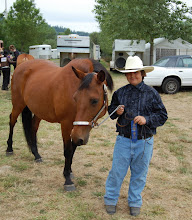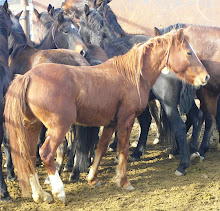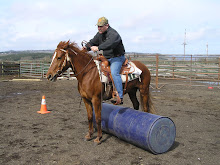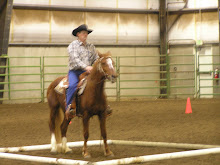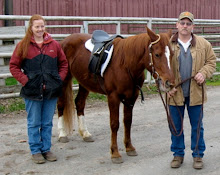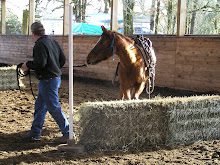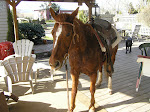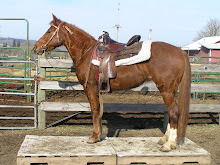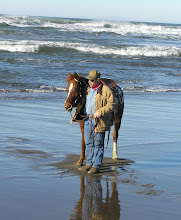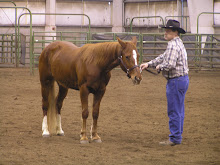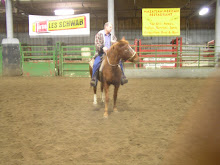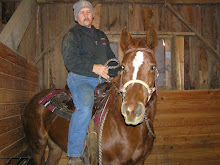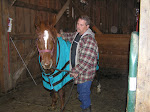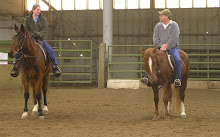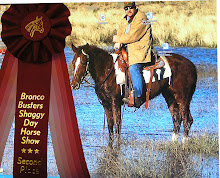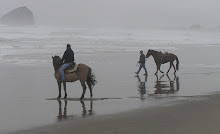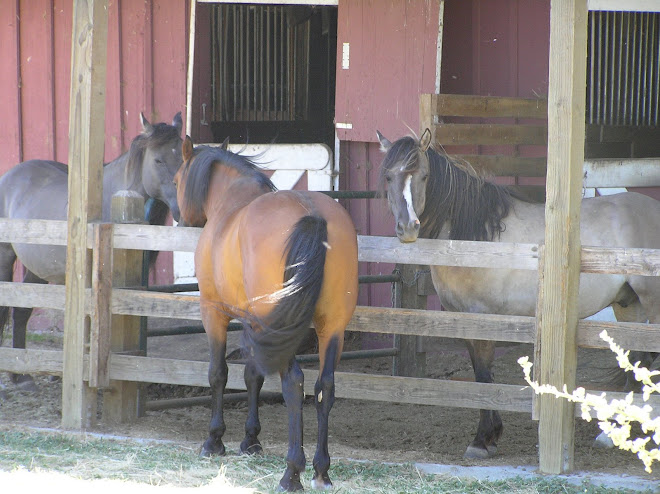
Taming the Mustang
Red Prairie horse
Trainer participates in
‘Mustang Makeover’
Adoption event
By Garret Jaros
Correspondent, The Sun
Twenty days into the Northwest Extreme Mustang Makeover competition trainer Kevin Sink of Sheridan knew he had no chance of winning. When he led the 6-year-old gelding he’d named Santana into the middle of Albany’s packed Calapooia Arena for the wild horse auction-adoption that marked the culmination of the 90-day Makeover, he also had no illusions.“I realized he wasn’t a 90-day horse because he had some injuries to work through,” Sink told the crowd. “When we first got him we could tell he had some previous injuries. There’s nothing broken.
It’s more chiropractic work. It’s just mending old injuries.” And then he added — “I want to take him home.”
He sealed the deal with a $125 bid that went unchallenged by the cheering crowd, which numbered in the thousands and by a show of hands, was filled with mustang owners and admirers.
The Mustang Makeover
The Extreme Mustang Makeover was part of the Northwest Horse Fair and Expo, a three-day event March 19-21, at
the Linn County Fair and Expo Center in Albany. The Mustang Makeover began in Texas in 2007 as a way to help the Bureau of Land Management prepare wild horses for adoption. The BLM is tasked with managing wild horses and burros to ensure their health and to keep them from overpopulating the range. The animals roam free on public lands in the West and are protected by federal law.
The Mustang Heritage Foundation, which started the Makeovers, now stages events across the country throughout the year. The Albany Makeover included about 25 horse trainers from Oregon, Washington and Idaho whom were randomly assigned a wild horse from Oregon. The trainers were given 90 days “to gentle” them before demonstrating their abilities during the three-day horse fair that culminated with the mustangs being auctioned for adoption on Sunday. Few animals are more impressive in battle than an infuriated mustang stallion. With ears laid back and nostrils flared they can move faster than — you. They can crush bones, remove fingers, and clamp down with jaws strong enough to hurl a mountain lion. They can knock a bear down with their hind legs or crush a wolf under their forefeet.
Continued from PAGE 1
And to a wild horse, man is nothing more than a predator who wants to eat him, Sink says. But when you talk to mustang people, you begin to hear the same words and phrases again and again — kind, loving, patient, smart, and best horse I’ve ever had.
“I absolutely love this horse,” Sink said of Santana. “Santana has a kind heart. He’s willing. Even though he’s been in a lot of pain and discomfort he never really tried to attack you or plain say no. He had a heart, he wanted to try and he was cuddling. He’s just a wonderful little guy.”
Wild Horses
It’s estimated that about 30,000 wild horses roam on BLM lands alone in 10 Western states. Nearly half of that population is found in Nevada. Another 30,000 are estimated to be in holding pens awaiting adoption or transfer to long term holding pastures in Oklahoma and Kansas. Wild horses in the United States are descendents of animals that were released or escaped from Spanish explorers, ranchers, miners, the U.S. Cavalry and Native Americans.
Mustang wranglers can point out the breed lines of a wild horse on sight. Some look quarter horse or thoroughbred, others draft or Arab. A distinction that may become even sharper as the ailing economy has led some horse owners, who can no longer afford to feed and care for their steeds, to turn them loose in the wild, said trainers at the Mustang Makeover.
It’s estimated that Oregon has a wild horse population of about 3,700, said Tom Duke, who manages the BLM’s Burns District Oregon Wild Horse and Burro Corral Facility outside of Hines. There are 21 wild horse herd management areas across Oregon, but all the mustangs distributed for this year’s Mustang Makeover came from gathers in southeastern Oregon.
“We have excess horses,” Duke said of the Oregon wild horse population. “Our low numbers are supposed to be around 2,700.”
There are currently about 550 horses at the Burns District facility. The mustangs weigh 900 to 1,200 pounds apiece and eat a combined 8 1/2 tons of hay a day at the facility.
‘Gentling’ a wild horse
This was Sink’s and Albany’s second Mustang Makeover where trainers “gentle” a wild horse for adoption and compete with each other in the process. “I support this competition one hundred percent,” Sink said. “I really like doing it. It’s a challenge. I’m very competitive. This year flat tore me up because I wasn’t in there, I wasn’t in the competition, but I got a heck of a horse.”
The mustangs and trainers competed once each day during the Albany event and were given scores based on the condition of the mustangs and how well they performed at obstacle courses and tasks designed to mimic trails, ranch work and equestrian events.
The top 10 finishers squared off in a freestyle event on Sunday for a $10,000 purse. The winner received $2,500 and a belt buckle while the others received a share based on their placement. Jasmine Lechner of Seal Rock captured first.
“Arena work is not his work,” Sink said of Santana.“You get him down there on the beach and trails, that’s where he shines.” Gentling a wild horse takes time and the Mustang Makeover is a bit of a rush, Sink says. “We try to get a saddle on them as soon as possible then, but normally I like to take 30 days to gentle a horse, 30 to 60 to get them gentled and with good ground manners,” Sink said. “The first thing is you want to gain their trust. They are afraid of you and they think that you’re gonna eat ‘em. Once you gain their trust, then you can start working closer to ‘em and start petting ‘em and start touching ‘em. It’s a slow process sometimes. Other times you can walk right up and they just like people.” He was able to touch Santana on the first day. Sink, who works as construction estimator and project manager for Knife River when he’s not training mustangs, said he fell for mustangs while he and his wife were on a ride in 1995. “There was this beautiful horse on the trail ride and come to find out it was a mustang,” Sink said. “And that sort of hooked us and we just sort of went over to the BLM Burns (District) and just got hooked and started adopting.” The couple now has eight mustangs and a couple of others he’s training. Sink only works with Mustangs now. “My heart is for these mustangs and I prefer to use them,” he says. “They will tell you what they’re gonna do. Domestics can sometimes be sneaky about kicking you but mustangs signal with their ears back. It’s plain and simple.” Sinks believes Santana is not only a great horse but also well on the road to recovery. The vet has looked at him and ruled pulled muscles and tendons and prescribed six months of rehabilitation. Sink invites the public to visit and talk about their mustangs. “We just love these things,” Sink said. “They are our lives and our kids.” Adopting a wild horse is not for anyone without solid horse skills and a willingness to go the extra mile. Even horses adopted from the Mustang Makeover, which have benefited from professional training worth an estimated $2,500, may need follow-up training. A resource of local trainers and even stipends to help pay for trainers are available through the BLM.
“Just give them a chance and adopt them,” Sink said. “There are so many people that won’t give these guys a chance to prove what they can do.”




